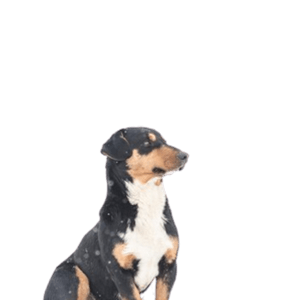Lancashire Heeler

The actual foundation of the Lancashire Heeler is shrouded in mystery, though we do understand the breed’s been around since the seventeenth century. The Lancashire Heeler probably may be traced to the Pembroke Welsh Corgi and Manchester Terrier and was used to help guide farm animals to the Lancashire marketplace in northern Wales. Aside from his duties as a farm animals herder and ratter, the Lancashire Heeler additionally has become well-referred to as a family companion, gaining a reputation in the United States, Sweden, the Netherlands, and Australia. The Lancashire Heeler was positioned on The Kennel Club (UK) Endangered Breeds list because of a small gene pool and risk of inherited diseases, such as primary lens luxation. The breed has been identified through the United Kennel Club as a part of its Herding Dog Group since 2009. It is also a member of the American Kennel Club’s Miscellaneous Class. The Lancashire Heeler is a rare breed today, with only approximately 5,000 specimens worldwide.
- Type - Terrier
- Weight -9 to 17 pounds
- Height- 12 inches (male), 10 inches (female)
- Family -Herding (UKC), Miscellaneous (AKC)
- Date of Orgin-17th century
- Other Names -Ormskirk Terrier
Energy Level
Exercise Requirements
Playfulness
Affection Level
Friendliness To Dogs
Friendliness To Other Pets
Friendliness To Strangers
Watchfulness
Ease of Training
Grooming Requirements
Heat Sensitivity
Vocality
Temperement
Small but mighty, the Lancashire Heeler is a terrier-kind working dog. He is sturdily built; his body is a little longer than tall, with a medium-to-excessive energy level. His short, weather-resistant coat may be either black-and-tan or liver-and-tan, and he carries his tail upward in a mild curve. Apart from driving cattle, the Lancashire Heeler is equally adept at training and hunting rabbits and rats.
Upkeep
The Lancashire Heeler terrier is a small but mighty, working dog. He is sturdily built, his body is slightly longer than it is in height, with a medium-to-excessive energy level. His short, weather-resistant coat may be black-and-tan or liver-and-tan, and he carries his tail upward in a moderate curve. Aside from driving cattle, the Lancashire Heeler is similarly adept at hunting rabbits and rats.
Health
“Major diagnosis: Primary lens luxation
Minor diagnosis: N/A
Occasionally Seen: N/A
Suggested Tests: Primary lens luxation, collie eye anomaly
Lifespan: 12 to 15 years”
Disclaimer
Note: While the characteristics mentioned here may frequently represent this breed, dogs are individuals whose personalities and appearances will vary. Please consult the adoption organization for details on a specific pet.
